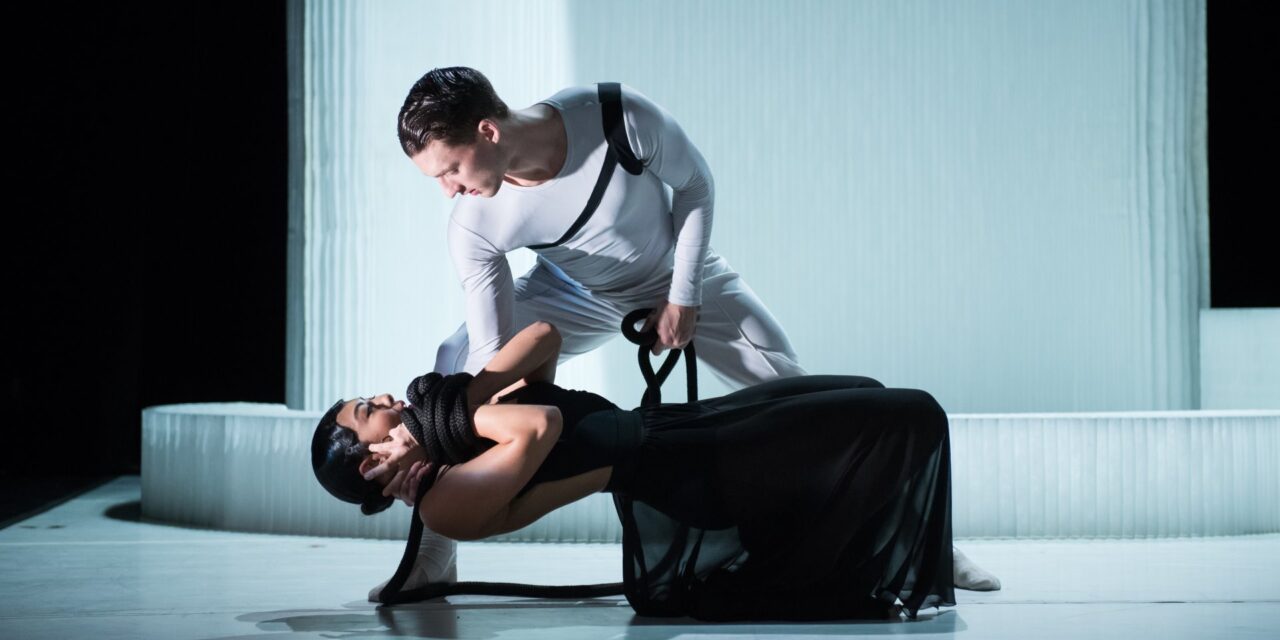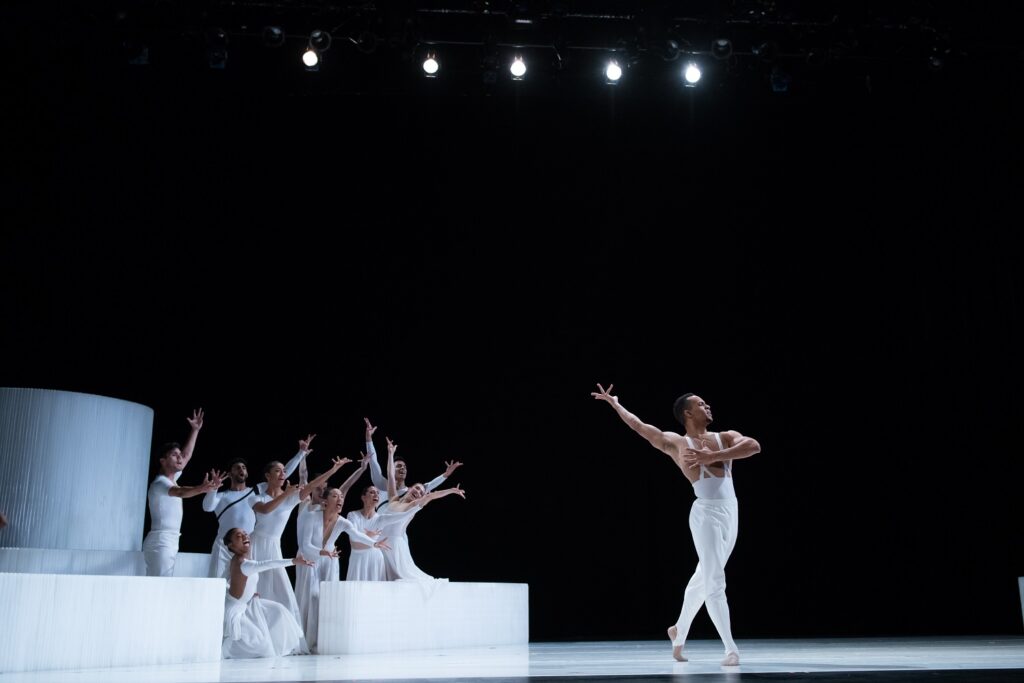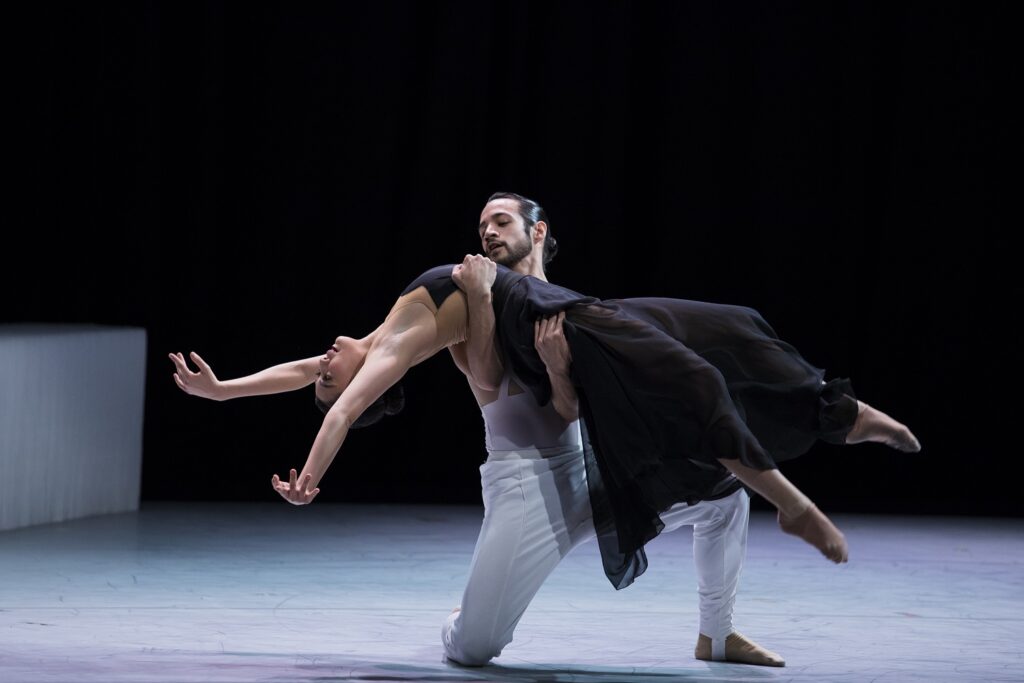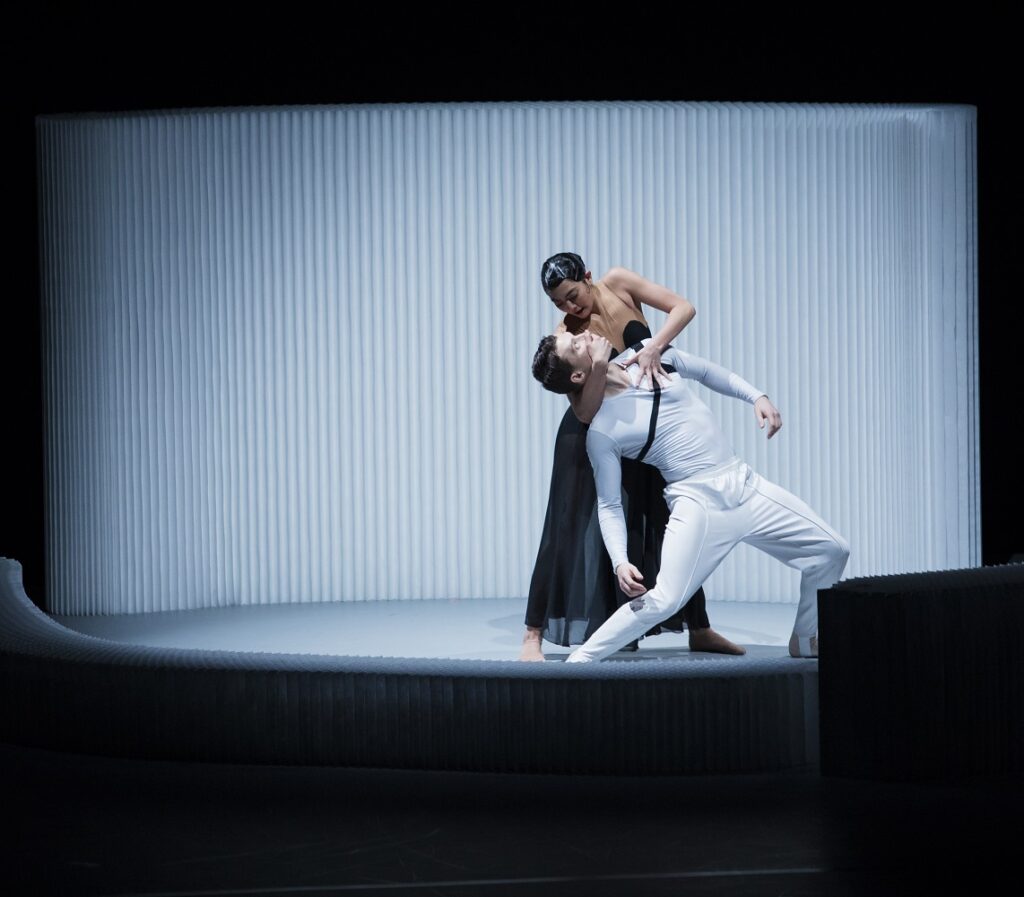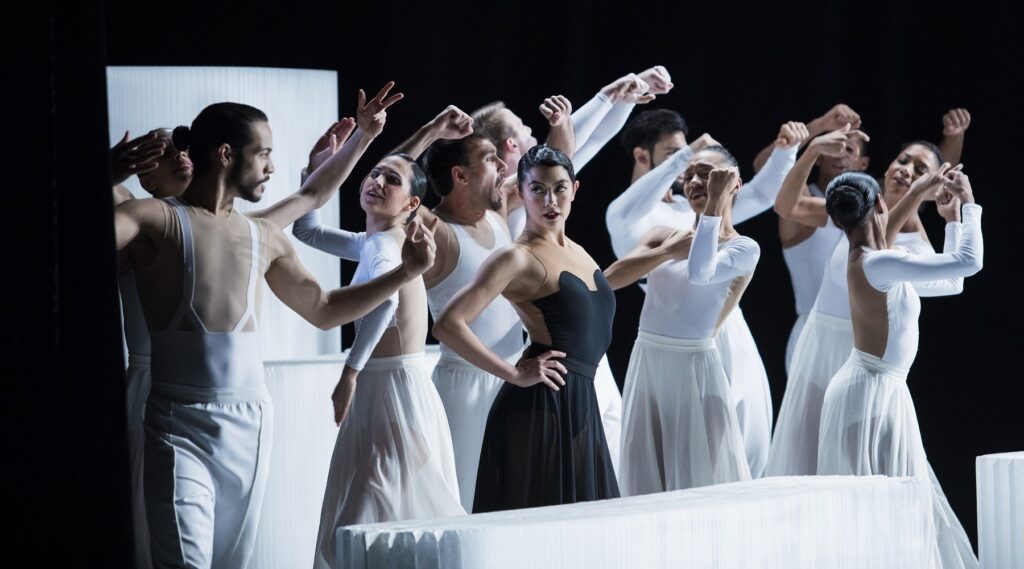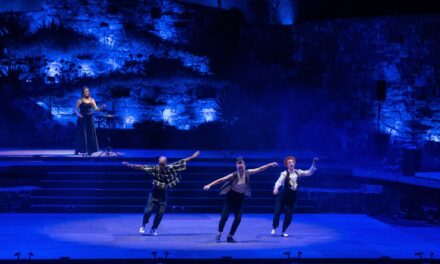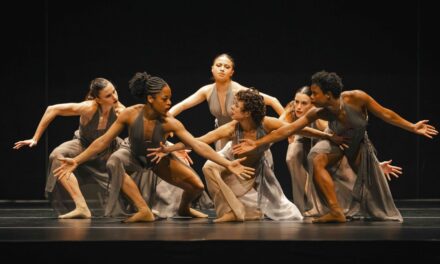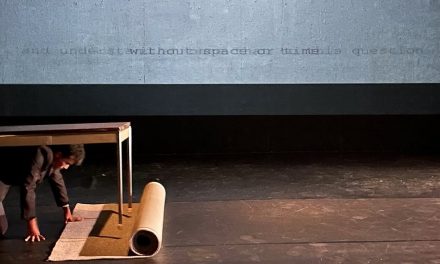The Carpenter Performing Arts Center was packed with people there to see the New York based Ballet Hispánico perform Gustavo Ramírez Sansano’s version of Georges Bizet’s 1875 opera “Carmen.” There is much to like about Sansano’s version but there are also elements that simply do not work. If you are unfamiliar with the story, “Carmen” is about the downfall of Don José who falls in love with a gypsy woman named Carmen. He deserts his childhood sweetheart and the military in pursuit of Carmen’s love and although they are together briefly, Carmen seeks out the affections of the handsome torero Escamillo and in a fit of jealousy, José stabs and kills Carmen.
Generally, the set for “Carmen” is an elaborate depiction of a town somewhere in southern Spain (in Prosper Mérimée’s 1845 novella by the same name, it was the city of Córdoba) and the costumes are brilliant colors with Carmen dressed in fiery red. Not so here. Consisting of all white accordion-pleated sections and black and white hanging images of Picasso-like women and bulls, set designer Luis Crespo chose to provide only an outline of buildings and structures. The costumes, designed by David Delfin picked up on this theme with everyone dressed in white except for Carmen who is in all black.
Led by Artistic Director and CEO Eduardo Vilaro, the Ballet Hispánico dancers are amazing and brilliantly execute Sansano’s extremely complex and far too busy choreography. The story was not easy to follow, but I get the sense that Sansano was not concerned with providing a clear narrative. We know which of the women is Carmen because of the color of her dress and that she appears to be unconcerned with being friends with anyone. She is sultry, yes, but no more so than the other women.
The program states: “Carmen, as envisioned here, becomes an allegory for rebellion and autonomy, her movement a declaration of individuality and passion.” Sansano provides his Carmen with autonomy but her passion is often lost while maneuvering through the choreography that generally has a different movement or gesture for every beat of music. I would venture to say that here, Sansano is more interested in creating intricate movements than anything else. Sad! With dancers as exquisite as the ones in Ballet Hispánico, the possibilities are endless.
For his “Carmen”, Sansano chose to use various works by George Bizet; all of it lush and filled with passion, suspense and action. With the exception of the final duet with Don Jose and Carmen, however, his choreography only visualizes the notes in the music, ignoring much of Bizet’s musicality and lyricism.
Amanda Ostuni is delightful to watch but her facial expressions did not reach to where I was sitting. She appeared uninterested in either Don José, brilliantly and passionately performed by Omar Rivera, or her soon to be lover Escamillo, masterfully portrayed by Daniel Palladino.
The gorgeous lighting for “Carmen” was by Emilio Lavarías and the costume design was by David Delfin with costume construction by Travis Halsey and Diana Ruettigerz.
The entire cast of “Carmen” was Fatima Andere, Amir J. Baldwin, Mia Bermudez, Antonio Cangiano, Amanda del Valle, Francesca Levita, Dylan Dias Mcintyre, Andrea Mish, Adam Dario Morales, Amanda Ostuni, Daniel Palladino, Omar Rivéra, Isabel Robles, Yadamy Soria Fernandez, and Olivia Winston.
It is the highly trained and expressive dancers that make this ballet worth seeing and I highly recommend other works in Ballet Hispánico’s repertoire.
To learn more about Ballet Hispánico, please visit their website.
For more information about the Carpenter Performing Arts Center’s season, please visit their website.
This article was edited on March 21, 2025 to correct a misspelling.
Written by Jeff Slayton for LA Dance Chronicle.
Featured image: Ballet Hispánico’s “Carmen.maquia” – Photo by Paula Lobo.

